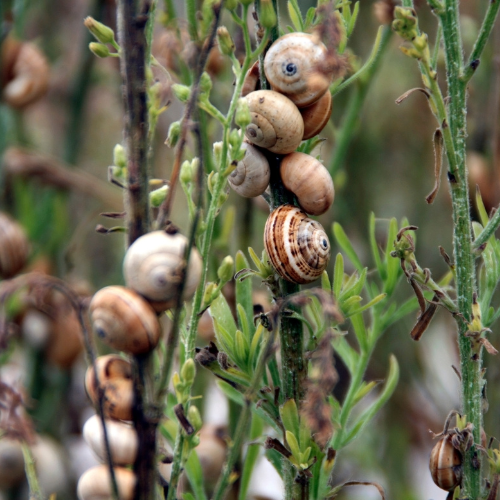
04 Jan Snail Struggle: Protecting Your Green Space
Winning the Battle Against Snails in Your Garden
Snails, often admired for their unique appearance and slow pace, quickly become nuisances when invading gardens and yards. These small but destructive creatures wreak havoc on a range of plants, from tender seedlings to mature vegetables and ornamentals. Notoriously voracious, they munch through leaves, flowers, and even bark, often leaving a trail of devastation.
This issue is more acute in environments conducive to snail habitation, typically moisture-rich and sheltered gardens. Gardeners and homeowners face the challenge of maintaining lush, thriving gardens while controlling these unwelcome guests. Fortunately, various strategies exist, from natural remedies to hands-on approaches, to effectively manage snail populations in yards.
This guide explores 10 easy, effective ways to rid gardens of snails, offering immediate and long-term solutions for a snail-free zone. These methods suit avid gardeners and homeowners alike, offering practical, environmentally conscious ways to address the snail problem. Let’s dive into these strategies and learn how to reclaim your beautiful garden from these pesky invaders.
Snail-Free Gardening
To deter snails, create barriers using diatomaceous earth, a natural, garden-safe pest control solution. Sprinkle it around plants; its abrasive nature prevents snail crossing. Beer traps, a classic method, use beer’s yeasty scent to attract and trap snails. Fill shallow containers with beer and place them in your garden. Snails, drawn by the smell, fall in and can’t escape. Regularly check and responsibly dispose of these traps.
Copper tape, effective against snails, repels them as they dislike the reaction it creates with their slime. Surround plant pots or garden beds with copper tape to form a barrier. Introduce natural predators like birds and beetles to help control snail populations. Create a bird-friendly environment with feeders and baths to invite these allies. Incorporate snail-resistant plants like lavender, rosemary, and geranium into your garden design; snails typically avoid these plants.
Use a salt barrier cautiously; while it dehydrates and kills snails, salt can harm soil and plants. Apply it sparingly around garden edges. Handpicking snails during evening or early morning, when they’re most active, is effective. Collect and relocate them away from your garden. Encourage healthy soil and robust plant growth; less susceptible to snail damage, healthy plants reduce snail impact. Use snail baits and pellets judiciously; choose eco-friendly, pet-safe options and follow instructions to avoid harming other wildlife or pets. Regularly remove weeds and garden debris; snails thrive in damp, sheltered areas, so reducing their habitats keeps their numbers in check.
Thriving Without Snails
Adopting these strategies significantly controls and manages snail populations, preserving your garden’s health, beauty, and vitality. Snails can cause major damage to various plants, making their management vital for any gardener. Consistent application of these methods ensures long-term success, as sporadic efforts allow snail populations to rebound. Regular garden monitoring, combined with maintenance strategies like debris removal and deterrent use, maintains snail control.
Integrating multiple methods forms a robust defense against snails. For example, using diatomaceous earth with beer traps provides a barrier and removal method. Cultivating snail-resistant plants alongside natural predators creates a less hospitable environment for snails. These proactive steps create a garden ecosystem less prone to snail infestations, leading to a healthier, thriving space where plants grow unthreatened. A snail-free garden, aesthetically pleasing and a testament to sustainable gardening, becomes a source of pride and joy—a place where you and your plants flourish in harmony.


No Comments